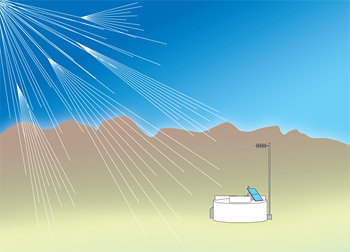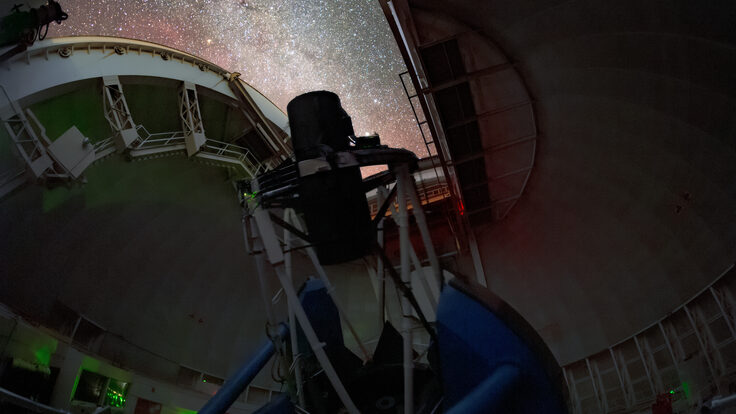 |
| Illustration: Sandbox Studio |
Particles in the sky
What is the universe made of? What are matter, energy, space, and time? How did we get here and where are we going?
In particle physics, the classic place to look for answers is in giant accelerators where particles collide.
But nature also provides a wealth of data, in the form of neutrinos streaming from the sun and other stars, the faint afterglow of radiation from the big bang, and other space phenomena. Particle physicists increasingly turn to these non-traditional sources of information and collaborate with colleagues in astrophysics and cosmology to get a more complete view.
That collaboration is reflected in the spires database of publications in high-energy physics. Starting in the 1980s, large numbers of particle physicists began citing articles related to the sky. For much of that decade, two publications on the theory of inflation, the super-fast expansion of the early universe, ranked among the 50 most-cited papers in spires.
By the late 1980s, neutrino data gleaned by observing the sky became a hot commodity. Interest was spurred by the first recordings of neutrinos emitted by a supernova, or exploding star, obtained by the Kamiokande-II and Irvine-Michigan-Brookhaven experiments. A few years later, particle physicists eagerly absorbed results from the Cosmic Background Observer, a satellite that mapped the afterglow of the big bang; the announcement of those results was the second-most-cited publication in the spires database for 1993.
The last ten years have seen a flood of non-traditional papers on the spires top-cited lists (see www.slac.stanford.edu/spires/topcites/matrix.shtml). They include the discovery of oscillations of atmospheric neutrinos, evidence for an accelerating universe, and the puzzling deficit of certain types of neutrinos from the sun. Together, the contributions from all of these fields bring us closer to understanding the mysteries of the universe.
Heath O'Connell
Click here to download the pdf version of this article.






